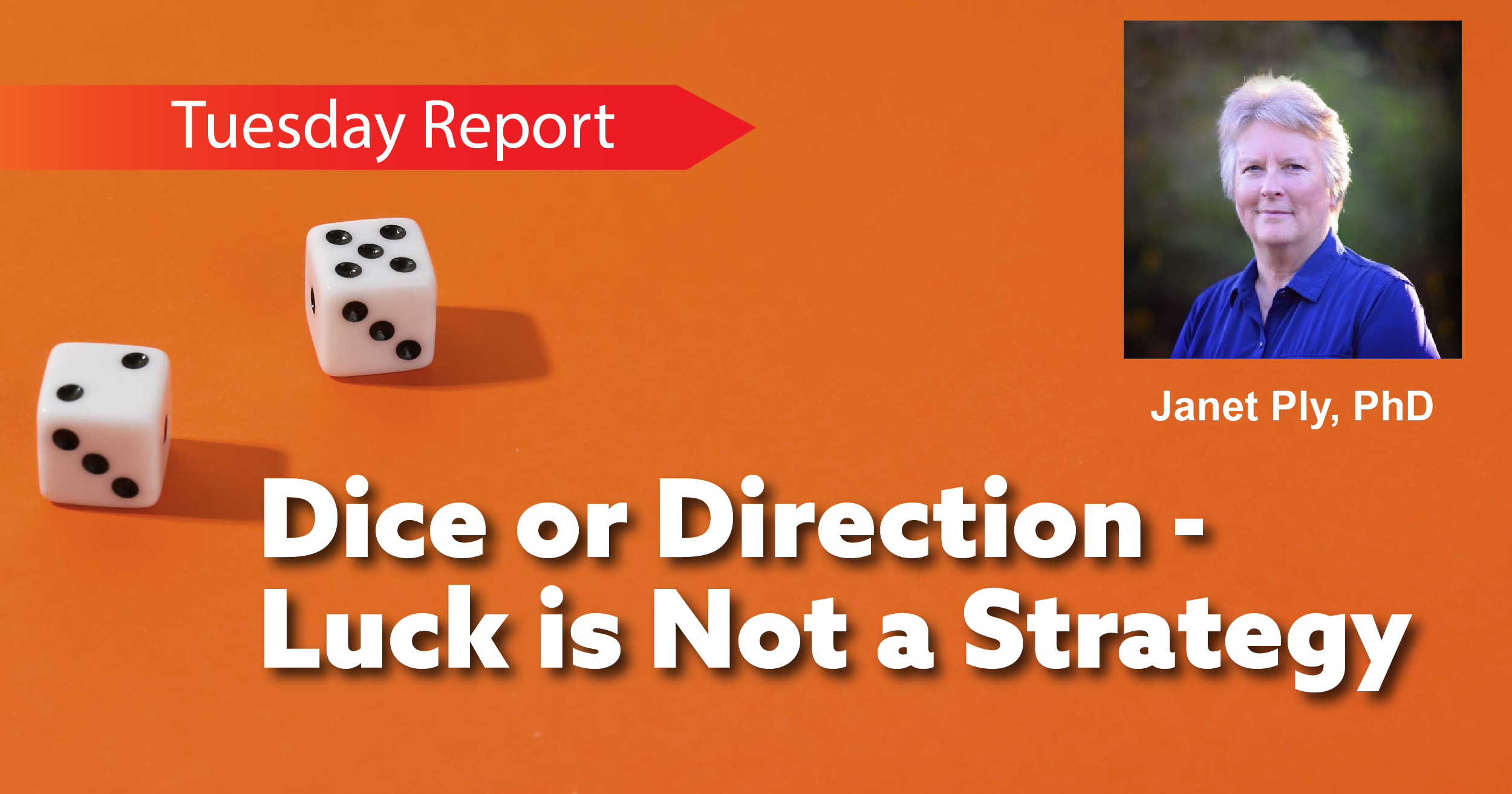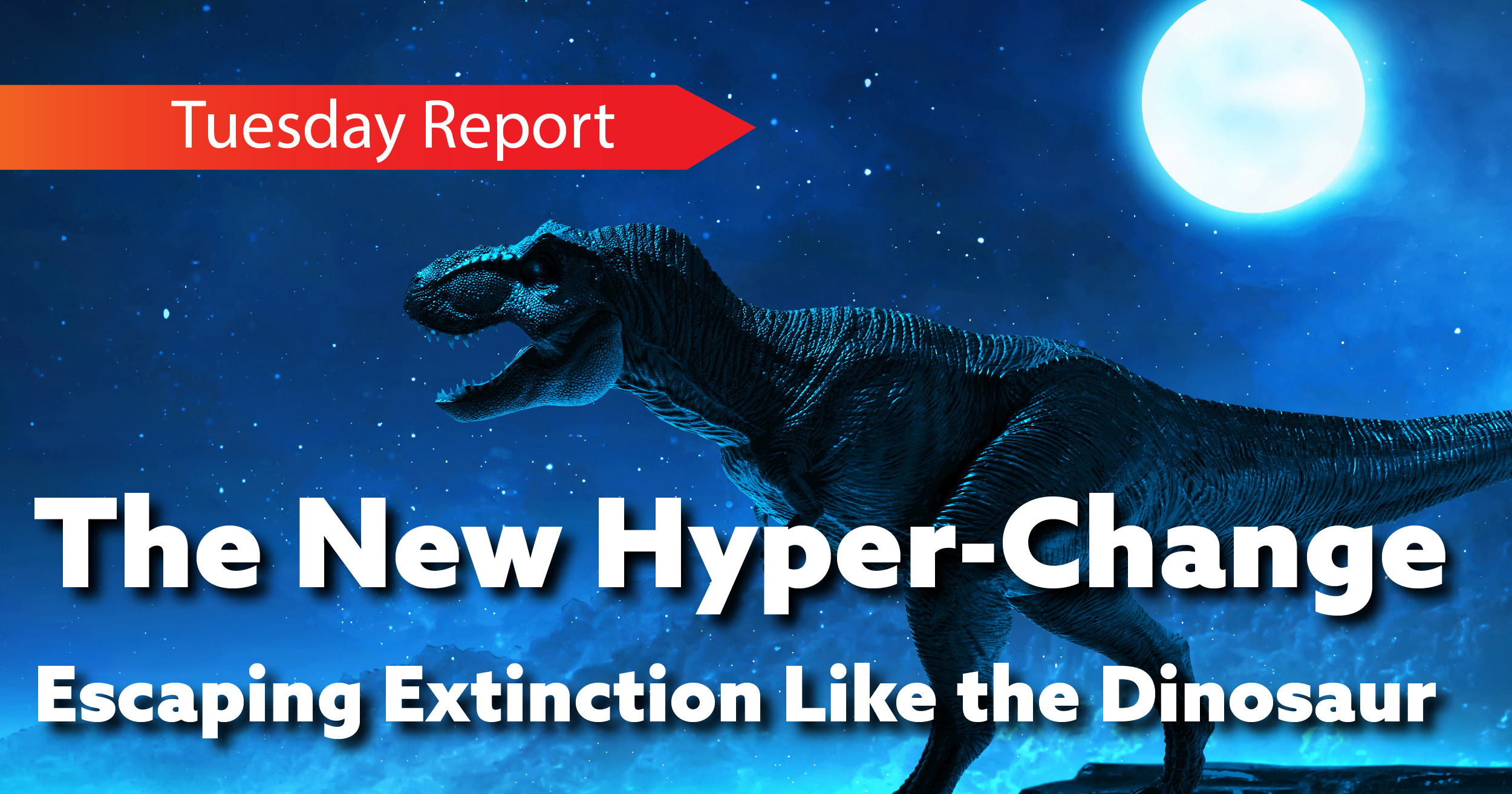Our guest columnist this week is Janet Ply, PhD. Janet earned her PhD from George Mason University in information technology. She is a recognized authority in helping organizations manage complex, high level, high stakes change. She is author of “Luck Is Not a Strategy: An Executive Guidebook for Leading Change Initiatives”.
I had been working for a company for three weeks when I was asked to attend a meeting with the executives at a client company in Detroit regarding an initiative that was not going well.
The executives of my company had been summoned to explain what they were going to do to turn things around. The meeting was scheduled for 5:00pm in a large board room. We were kept waiting for at least an hour before the CIO and her entourage entered the room in a less-than-cordial mood.
After brief introductions, the meeting started with the CIO asking (demanding) what the executives were planning to do to get the initiative back on track. After an awkward and uncompelling presentation, she was furious.
Standing and leaning across the large wooden conference room table, the CEO, face red with anger, neck veins bulging, she said in a loud and angry voice, spittle flying, “DO YOU MEAN TO TELL ME YOU’RE A $1.3B COMPANY BASED ON LUCK???”
This initiative fell into the two-thirds-of-change-initiatives-fail bucket. But it didn’t have to be that way. We KNOW why programs fail yet we keep making the same mistakes over and over. Why is that?
Change initiatives are complex, which is a lot harder than something complicated. “Complex” means a lot of interdependence and connections. “Complicated” is usually understood to mean large numbers.
As an example, implementing a change among 1,000 plumbers might be complicated but probably not complex, as there is little to no communication and interdependence among them. On the other hand, implementing changes across two departments, such as sales and operations, will be complex because they are directly connected and may have conflicting priorities.
If we doubled the number of plumbers, would it be twice a difficult to implement the change? No, it would likely add more time. However, if we add two more interdependent departments, there are exponentially more connections, and the complexity is much more than double.
Many executives don’t take the exponential complexity factor of enterprise-level change initiatives into consideration. When teams have been successful executing on programs, they most likely were “linear” efforts versus “exponential” efforts. These successes lead them to a false sense of security. One of the executives at the meeting I described above made this comment to me, “This is the first project I’ve ever worked on where we couldn’t just grind our way through!” Now there’s an interesting project management approach!
In addition to underestimating complexity, other critical success factors are also overlooked (to name a few):
- Understanding and cascading the vision (the Why) across the enterprise and ensuring alignment across every part of the organization
- Knowing that change is hard and is more than telling people what to do. One of my clients made this statement about change: “We should’ve used a scalpel and instead we used a baseball bat.” Their change initiative not only failed but left a lot of carnage in its wake.
- Selecting the right executive sponsor to lead the initiative along with competent leaders.
- Being aware of the level of stress the organization is already under (e.g., have there been layoffs? What impact has the pandemic had on employees?)
- Putting an optimal program organization structure in place with the right people in the right positions at the right time.
- Having program controls in place to measure progress. One program manager made this comment to me on a $600M+ initiative: “This program is too large and complex to manage with project management software. It can only be done with spreadsheets and slide decks.” Two master schedulers proved him wrong, and he was liberated back to the marketplace.
Many additional factors come into play that should also be taken into consideration. If you’re embarking upon a change initiative or have one underway that isn’t going quite like you expected, check out “Luck Is Not a Strategy: An Executive Guidebook for Leading Change Initiatives” on Amazon. We know why change initiatives fail and we know how to make them successful.





